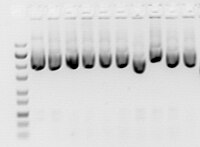Plasmid preparation

Plasmids are like tiny little pieces of genetic material that scientists can use to study or change genes in cells. They are often found in bacteria and can be used to make copies of certain traits, like the ability to resist antibiotics.
To prepare plasmids, scientists need to first grow a big batch of the bacteria that have the plasmids they want. They then use special tools to break open the bacterial cells and collect the plasmids.
After they have the plasmids, they need to make sure they have only the ones they want and that they are in the right shape. They do this by using different chemicals to separate out the plasmids and purify them.
Once the plasmids are purified, scientists can use them for different experiments, such as inserting them into new cells to change their genetic makeup or studying how they work. Plasmid preparation is an important process in genetic research and can help scientists better understand how genes work and how to treat or prevent diseases.
To prepare plasmids, scientists need to first grow a big batch of the bacteria that have the plasmids they want. They then use special tools to break open the bacterial cells and collect the plasmids.
After they have the plasmids, they need to make sure they have only the ones they want and that they are in the right shape. They do this by using different chemicals to separate out the plasmids and purify them.
Once the plasmids are purified, scientists can use them for different experiments, such as inserting them into new cells to change their genetic makeup or studying how they work. Plasmid preparation is an important process in genetic research and can help scientists better understand how genes work and how to treat or prevent diseases.
